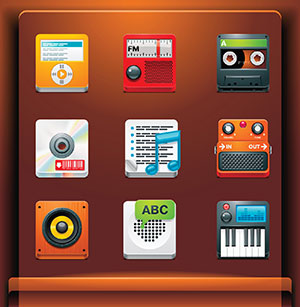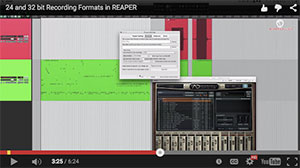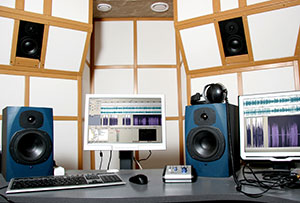 One of the themes of Home Brew Audio is “affordable pro audio.” And in that vein, I thought our readers would be very interested in this post by Audiofanzine – 12 Quality Plug-ins for $100 or Less.
One of the themes of Home Brew Audio is “affordable pro audio.” And in that vein, I thought our readers would be very interested in this post by Audiofanzine – 12 Quality Plug-ins for $100 or Less.
Now when we say “plug-ins” in the audio world, we don’t just mean effects like reverb, EQ, compression, etc. The same technology that allows us to plug additional stuff into our recording software also encompasses virtual instruments. In fact, in Reaper (my favorite recording software), both virtual instruments AND effects are applied to tracks via the “FX” button. For Windows, the primary plug-in technology is “VST.” Others include DirectX, TDM, and MAS, to name a few.
I must admit that one reason I was attracted to this particular list of affordable plug-ins was that my current favorite reverb program – Valhalla – was on the list. So I figured the list must be decent:-P. Just kidding. Anything that comes from Audiofanzine is definitely worth a read. Other plug-ins on the list include EQs, compressors, delays, and filters.
Anyway – yes, the list! OK. Check out the article and list of plug-ins costing $100 or less at the following link:
http://en.audiofanzine.com/plugin-effects/editorial/articles/12-quality-plug-ins-for-100-or-less.html
Cheers!
Archives for March 2015
Why You May Not Want To Use 32-Bit Floating Point
 Yeah, the headline uses a “techie” sounding bit (ha!) of lingo, which I usually try to avoid. But sometimes you will run into these terms and it helps to know a little something about them.
Yeah, the headline uses a “techie” sounding bit (ha!) of lingo, which I usually try to avoid. But sometimes you will run into these terms and it helps to know a little something about them.
Bit depth in digital recording (using a computer or digital recorder rather than analog tape) refers to how many characters are used to represent the audio in digital language – you know, all that binary “ones-and-zeros” stuff. To get an idea what that even means, see my article: 16-Bit Audio Recording – What The Heck Does It Mean? where I tell you how “bit depth is like champagne”:-).
Anyway, the Reaper Blog recently published a video showing you why you might just want to stick to 24-bit recording and rendering, rather than thinking you can benefit from using something called “32-bit floating point.” You can see that video at the link below. But I wanted to say a few things about it before you check it out. The video not only explains what it promises in the title/headline, but in doing so, it shows you some other cool things as well. You’ll see what a “clipped” audio recording sounds like. That’s when you overloaded your interface and ended up with distorted audio. It looks squared off on the top. I always say that once you have distorted audio, you cannot “undistort” it just by turning it down. The damage has been done. You’ll see that in this video. You’ll also see a MIDI drum file in one of the tracks, along with the virtual instrument (Addictive Drums) that the MIDI is triggering.
So go and watch this short 6 minute video here. It’s full of great information: http://reaperblog.net/2015/02/video-24-and-32-bit-recording-formats-explained/
Use This Simple Technique To Make A Boring Song Pop
 I just watched a cool video from Graham over at The Recording Revolution, showing how he turned one of his songs from one that was a bit boring (his word:)), to one that really popped. He did this using just one plugin – a vocal pitch effect similar to Antares Auto-Tune and Harmony Engine EVO. It was called Neptune Pitch Adjuster & Voice Synth, which is part of a recording software program called “Record,” by Propellerhead. Of course, you can do the same thing with other DAWs and vocal pitch and harmony plugins. I use Reaper as my main DAW, and you can use any VST plugin with Reaper.
I just watched a cool video from Graham over at The Recording Revolution, showing how he turned one of his songs from one that was a bit boring (his word:)), to one that really popped. He did this using just one plugin – a vocal pitch effect similar to Antares Auto-Tune and Harmony Engine EVO. It was called Neptune Pitch Adjuster & Voice Synth, which is part of a recording software program called “Record,” by Propellerhead. Of course, you can do the same thing with other DAWs and vocal pitch and harmony plugins. I use Reaper as my main DAW, and you can use any VST plugin with Reaper.
Anyway, the key here was that Graham used this effect to create contrast in his mix, making it more interesting and complex. He used a combination of extreme vocal pitch tuning – think T-Pain or that one song by Cher in the 90s – along with a sort of robotic sounding harmony generator creating some nice vocal harmonies on the verses. Then he left the vocal on the chorus untouched by those effects such that the natural sound of his voice there is very different from what it is on the verses. The overall effect is a mix that now pops more.
Watch the video – and more importantly – listen to the before-and-after audio here:
http://therecordingrevolution.com/2015/03/05/a-simple-way-to-make-your-mixes-pop-video/
Tips For Mastering Your Own Music
 If I could have my way all the time (shya!), I would never master my own music. Why? Because there are people out there who do NOTHING but audio mastering all day every day. It’s a highly specialized skill, and the people who do it professionally have super developed hearing and, usually, high-end gear designed for the purpose.
If I could have my way all the time (shya!), I would never master my own music. Why? Because there are people out there who do NOTHING but audio mastering all day every day. It’s a highly specialized skill, and the people who do it professionally have super developed hearing and, usually, high-end gear designed for the purpose.
However, I understand that I will NOT have my way all the time. And that means I won’t always have as much money as I would like (well, who does?:)). So it is sometimes necessary to do your own mastering. For times like those, it is best to have at least SOME knowledge of what you’re doing and why you’re doing it.
For an overview of what mastering is, you can check out my article Mastering a Song – What Does It Mean?
Here is a handy article with twenty additional tips for mastering your own audio:
http://www.musictech.net/2015/02/twenty-mastering-tips/